The Hatfield-McCoy trail system is one of the modern success stories of the off-road riding world. Thanks to smart marketing and a well thought-out trail system, the trail is heralded as one of the premier riding destinations in America.For this year's spring ride, a group of us ventured into the backwoods of West Virginia with a load of off-road bikes, interested in finding out what Hatfield-McCoy had to offer. What we found is a riding area worth the trip for off-road motorcyclists, and a system that is a model for our riding future.In 1999, Terry Fekete found his world turned upside-down when the hospital he'd worked for more than a decade was closed. New mining regulations had suddenly decreased the amount of strip mining being done in southern West Virginia, and his hometown of Man was faced with a severe recession. Jobs were hard to come by, and Fekete was unexpectedly left without one.
Fekete's plight was hardly unique. The local economy's nosedive proved to be the catalyst that drove the creation of an off-road trail system. For this depressed region of West Virginia, building the Hatfield-McCoy was a way to bring in some badly needed tourist dollars.The movement to take advantage of the area's rich riding resources began back in the early 1990s. Southern West Virginia is blessed with extensive areas of land that are too hilly and rocky to farm or even build. The area had hundreds of miles of country laced with logging and mining roads as well as informal trails. Organized rides in 1993 and 1995 drew 300 and 500 ATV riders and proved to local leaders that there was plenty of interest in off-road trails.The problem with riding the area is the bulk of the land is private.
Enter the Hatfield-McCoy Regional Recreation Authority, a public corporation created with the express purpose of making these private lands accessible to the public. The government-funded organization works with private owners of large tracts of land - from 3,000 to 50,000 acres - to create trail systems. The group seeks out and negotiates a licensing agreement is with these landowners. Then existing trails are mapped and once a route is established, connecting trails are built to make loops. Water controls are built to prevent washouts, and the trails are marked with hundreds of carsonite signs. The final step is building the parking lots and facilities necessary for a trailhead. As of mid-2004, the group has five riding areas open, with about 500 miles of trail open for riding with a permit.By the time Terry Fekete lost his job in 1999, the organization was building four of the trail systems on private lands in the area. In fact, Terry's son, John, was spending his days scouting and connecting trails with a sophisticated GPS system and plenty of backbreaking labor."John kept telling me that I needed to open a restaurant or a motel," Terry said. "When my nursing job went away, I finally decided to believe him."Terry bought a small four-plex in Man, and renovated it into The Rockhouse Lodge. As the trail system became better known, Terry found himself booked full. Today, he bought an old railway station and has converted that into another lodge to meet the increasing demand from visiting off-road riders. Terry also was active in a long, hard fight to bring a hospital back to Man. In fact, it appears that dream will come to fruition, but he won't be returning to that line of work."I couldn't go back to nursing," he said with a rueful grin. "It's hard on the knees and back, and I've gotten pretty used to running my own business."Terry's story is only a small part of the success of the trail system. The system spans eight counties in the southern part of the state, and conservative estimates put tourism income as a result of the trail system at about $1 million per year. Six new outfitters have been created, along with seven campgrounds, two hotels, and three new cabin rental companies.An ATV playground, the Rolling Thunder Extreme Race Park, has also opened, with a hillclimb and a dragstrip open to off-roaders.
This success is the result of a coordinated effort between the trail builders, community's opening the streets to ATV access, and local leaders joining together to make the region attractive to off-road riders. The result of this is that the system has grown to support several popular ATV jamborees, Dirt Week and Dirty Days, and thousands of off-road riders each year. Support is growing for the Hatfield-McCoy, and corporate sponsors such as Kawasaki, Suzuki of America, and Coke. McDonald's even contributed in the past year."When McDonald's buys into a trail system," said Matt Ballard, the executive director of the Hatfield-McCoy Regional Recreation Authority, "something's really right."The Trail SystemThe reason for this success is the trail system. It is well thought-out and a joy to ride. The Hatfield-McCoy system has five riding areas each containing about 100 miles of trails. The West Virginia terrain is mountainous and wooded, with black soil liberally peppered with granite. The low mountains are steep, with narrow valleys and fresh streams running below. The trails are exceptionally well marked, with each leg rated for difficulty with green (easy), blue (moderate), and black (advanced) labels. Each trail system is designed in loops, and riders can select routes based on how long they want to be out.The system our group explored was the Browning Fork Trails, which is accessible from Man. In fact, you can ride your ORV from the Rockhouse Lodge through town to the trailhead. Our intention had been to ride several systems, but the 100 miles of trail proved to be plenty for two days of riding. Also, the simplicity of riding directly from the hotel to the trailhead was pretty attractive as well.The Browning Fork Trails have some of the areas best singletrack loops, which was our primary interest. These two loops were built by John Fekete and his crew and were some of the most labor-intensive trails to build.Many of the ATV trails are laid on existing routes, while the singletrack is pretty much laid out entirely by hand. John used a sophisticated GPS system, topographic maps and existing game trails to select the route for his singletrack. He then put his crew to work making a trail."I'll give 'em a motorcycle and a route and tell 'em when they ride it, they are done. They'll flop around for two or three weeks and it's done," John said.The results of the hard work provide singletrack fans with plenty of challenge. We rode both loops in wet weather, and had a blast. The trails are six-inch-wide strips of level ground clinging to steep hillsides, with tight switchbacks, a smattering of log crossings, and technical sections popping over rockpiles and outcroppings.The sections are not terribly long at perhaps a couple miles each, but we spent well over an hour on each section. We ended up running both sections twice, and one of the sections was run back-to-front, adding to the challenge.The rest of the system was surprisingly fun to ride, particularly in the wet. The trails are mainly about four feet wide, and the black-rated sections feature climbs that will keep you on your toes. The terrain is often extremely rocky, and several of the hillclimbs were long and torturous.In fact, one of the climbs was almost a half-mile long and steep enough that any halt in forward progress made it nearly impossible to restart. A tricky section over a tree root in the middle of that hill stopped most of our crew, and getting to the top of that hill entailed 45 minutes of grunting, sweating, and pushing. Well, for most of the crew. My new Husqvarna TE450 climbed the hill effortlessly, giving me the unusual experience of being the first guy at the top and the only one to clean the section. I'm still savoring that little moment!Overall, we'd highly recommend the trail system for motorcyclists. Although it is designed with ATVs in mind, it is a blast on two wheels and offers plenty of challenge for even experienced riders. And the singletrack is worth the trip alone.The Hatfield-McCoy system is also still developing. The organizers have plans to expand from the existing 500 miles of trail to more than 2,000 miles in the coming years. More than just a fun place to ride, the Hatfield-McCoy trail system's innovative use of private lands and public funding, along with the strong community support for the system and the financial rewards that have resulted for people like John and Terry Fekete are indicative of how our sport can thrive as the demands on our natural resources increase.
Latest
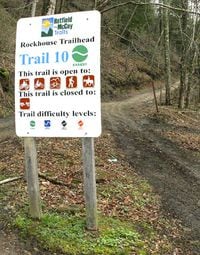
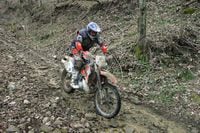
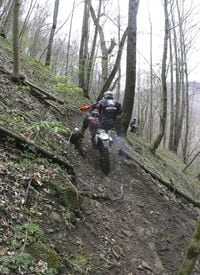
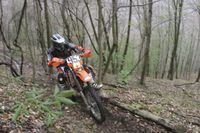

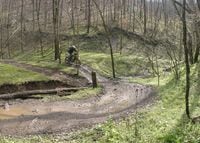

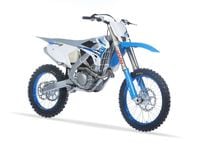
/cloudfront-us-east-1.images.arcpublishing.com/octane/54CMCACP5NAOZAFY2PJ3P4VLKM.jpg)
/cloudfront-us-east-1.images.arcpublishing.com/octane/BH3XMANK2VG5LA2XRDBBHMK4BE.jpg)
/cloudfront-us-east-1.images.arcpublishing.com/octane/7ZAAPXQWLVHXNAKXD5L7JJXCWU.jpg)
/cloudfront-us-east-1.images.arcpublishing.com/octane/QEO3EAHL55HUVDNVFC33QBYJZU.jpg)
/cloudfront-us-east-1.images.arcpublishing.com/octane/TS4CQC6KHZHHNG2DT44EOMISSA.jpg)
/cloudfront-us-east-1.images.arcpublishing.com/octane/AW6VAJP355AJVMXNDZ3CCBOWJM.jpg)
/cloudfront-us-east-1.images.arcpublishing.com/octane/TNWYBCGJB5H45PLJQBCOLD5RWU.jpg)
/cloudfront-us-east-1.images.arcpublishing.com/octane/IRZZYHO4XVDHRH22P2ZDQDRYHM.jpg)
/cloudfront-us-east-1.images.arcpublishing.com/octane/NNX5PHJJTBCKNJGQDQZDFRHYR4.jpg)

/cloudfront-us-east-1.images.arcpublishing.com/octane/3GVBLEXDJBCMDPQSU3DCLA2ZIU.jpg)
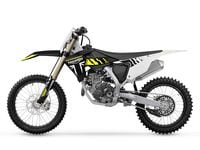
/cloudfront-us-east-1.images.arcpublishing.com/octane/VM4IESJWNVADRCTV4XHH24PGPA.jpg)
/cloudfront-us-east-1.images.arcpublishing.com/octane/HM5XHDOCUJAONMRU7G3W3XT3DM.jpg)
/cloudfront-us-east-1.images.arcpublishing.com/octane/PKDJEFNWPFC5FBQIQKWFNZXUWQ.jpg)
/cloudfront-us-east-1.images.arcpublishing.com/octane/52VYACHLOJFIJBXCVVF6HOBTXQ.jpg)
/cloudfront-us-east-1.images.arcpublishing.com/octane/EMZFWPV7WRDXBO5MLMM6K3UVYI.jpg)
/cloudfront-us-east-1.images.arcpublishing.com/octane/7UZTUEXJIRB7TEFC4AL3JFBH2I.jpg)
/cloudfront-us-east-1.images.arcpublishing.com/octane/HKD4ZFEEENFJHHXSB6KTJI3FWQ.jpg)
/cloudfront-us-east-1.images.arcpublishing.com/octane/LH7UVED36VFYDPF5A3KQFITAH4.jpg)
/cloudfront-us-east-1.images.arcpublishing.com/octane/EY2VN2TTQFEJZDSC7ZGZ56WCYI.jpg)
/cloudfront-us-east-1.images.arcpublishing.com/octane/2SM4ULIAVNGGHHDUKX6SYM54EU.jpg)